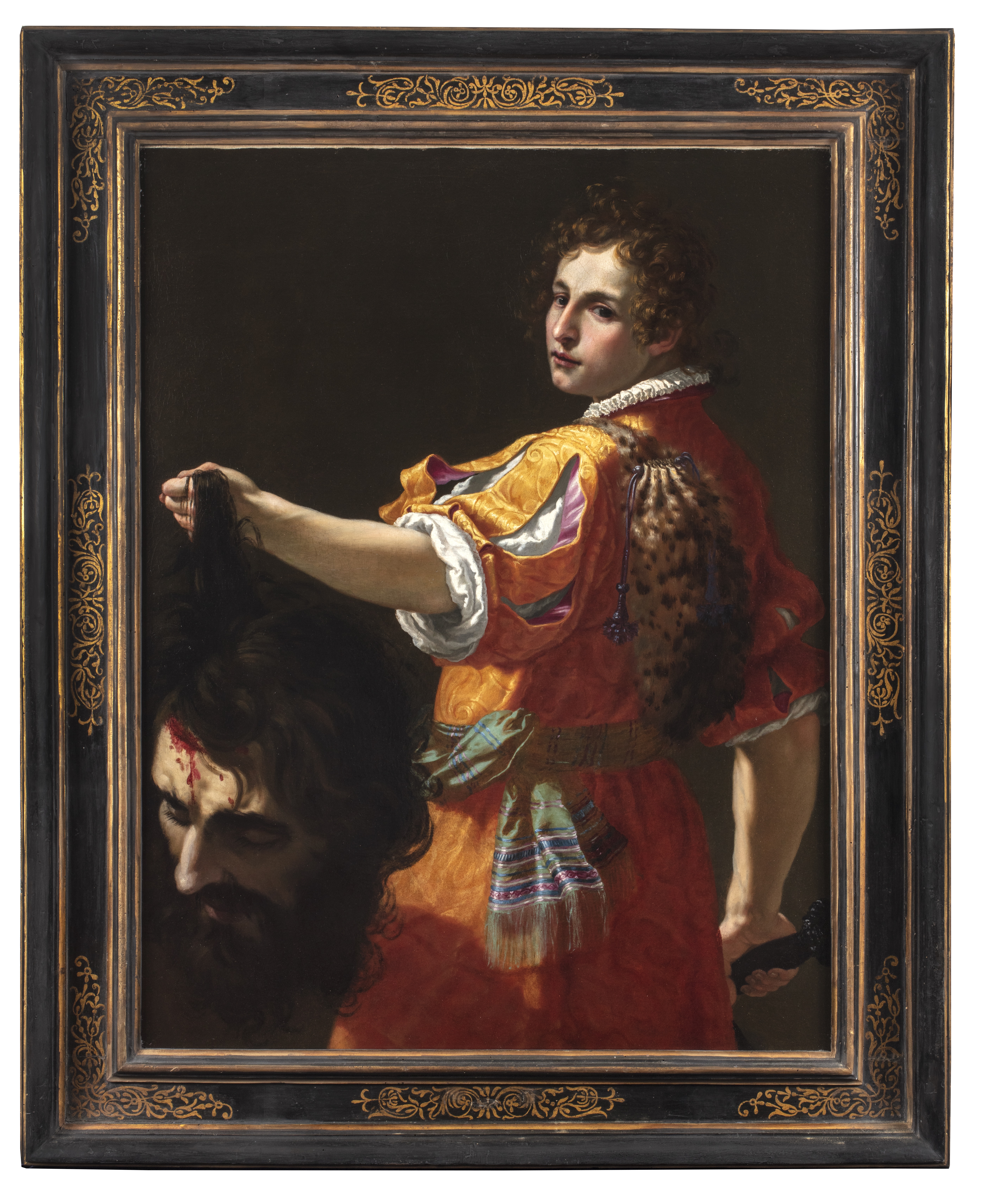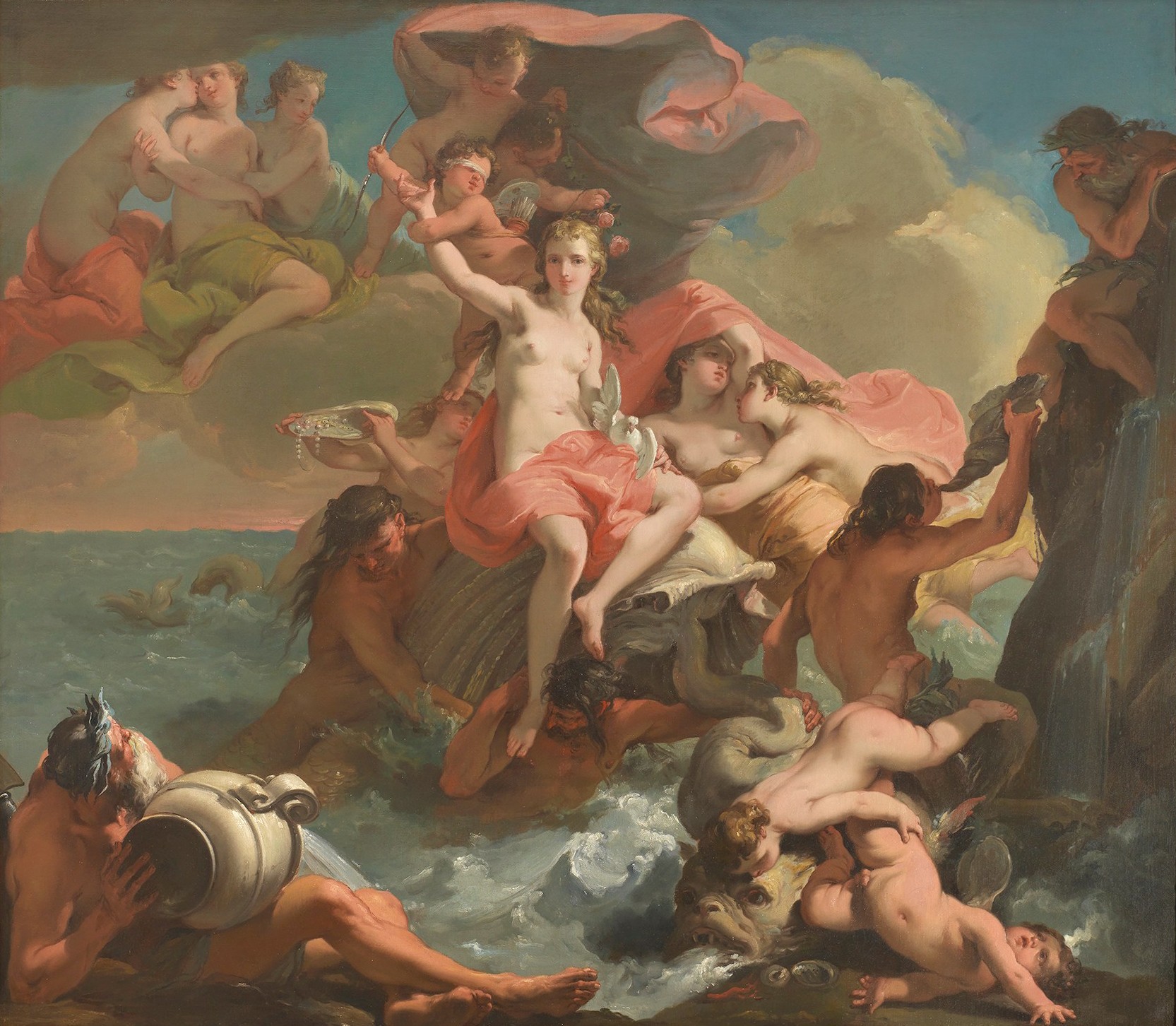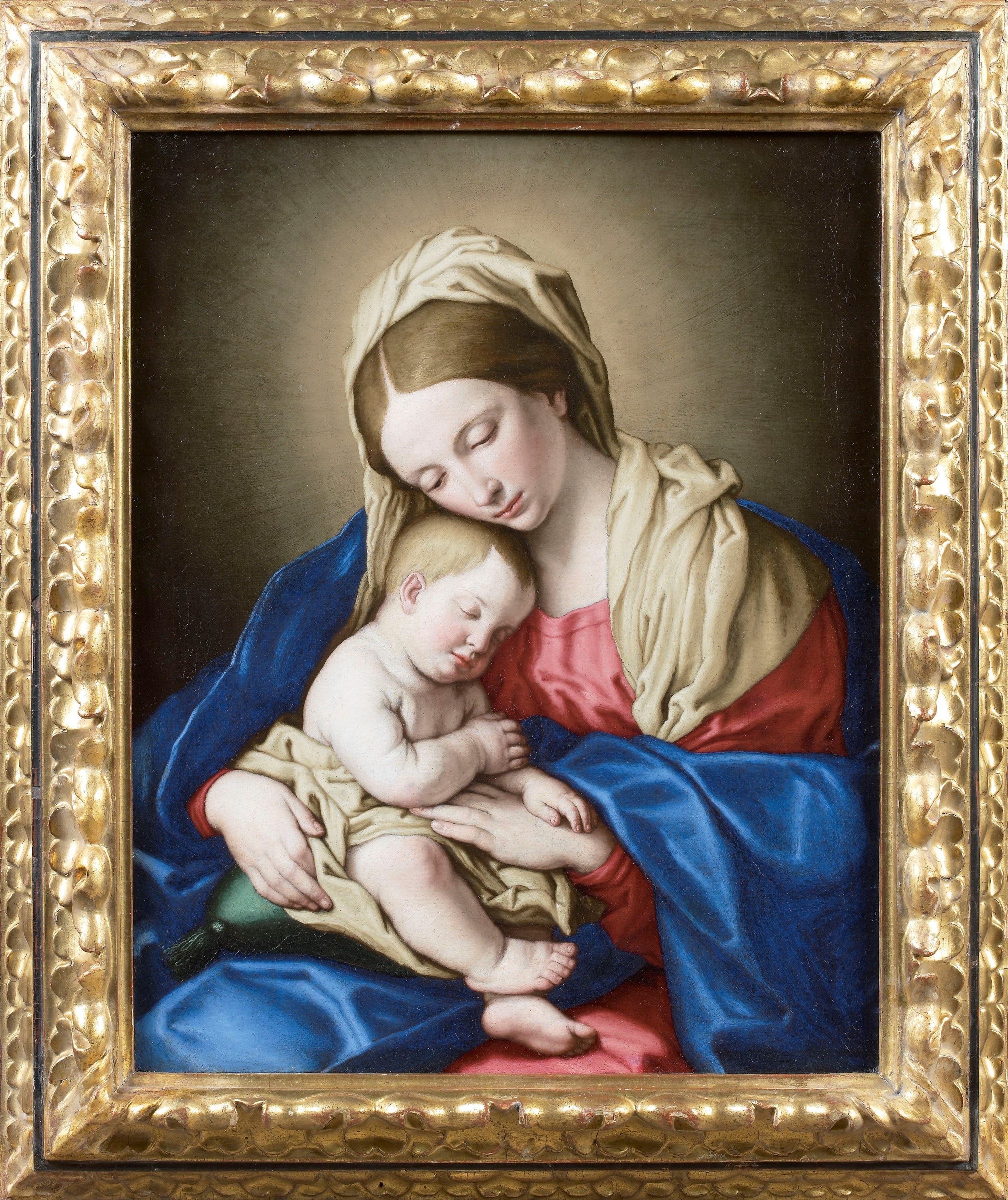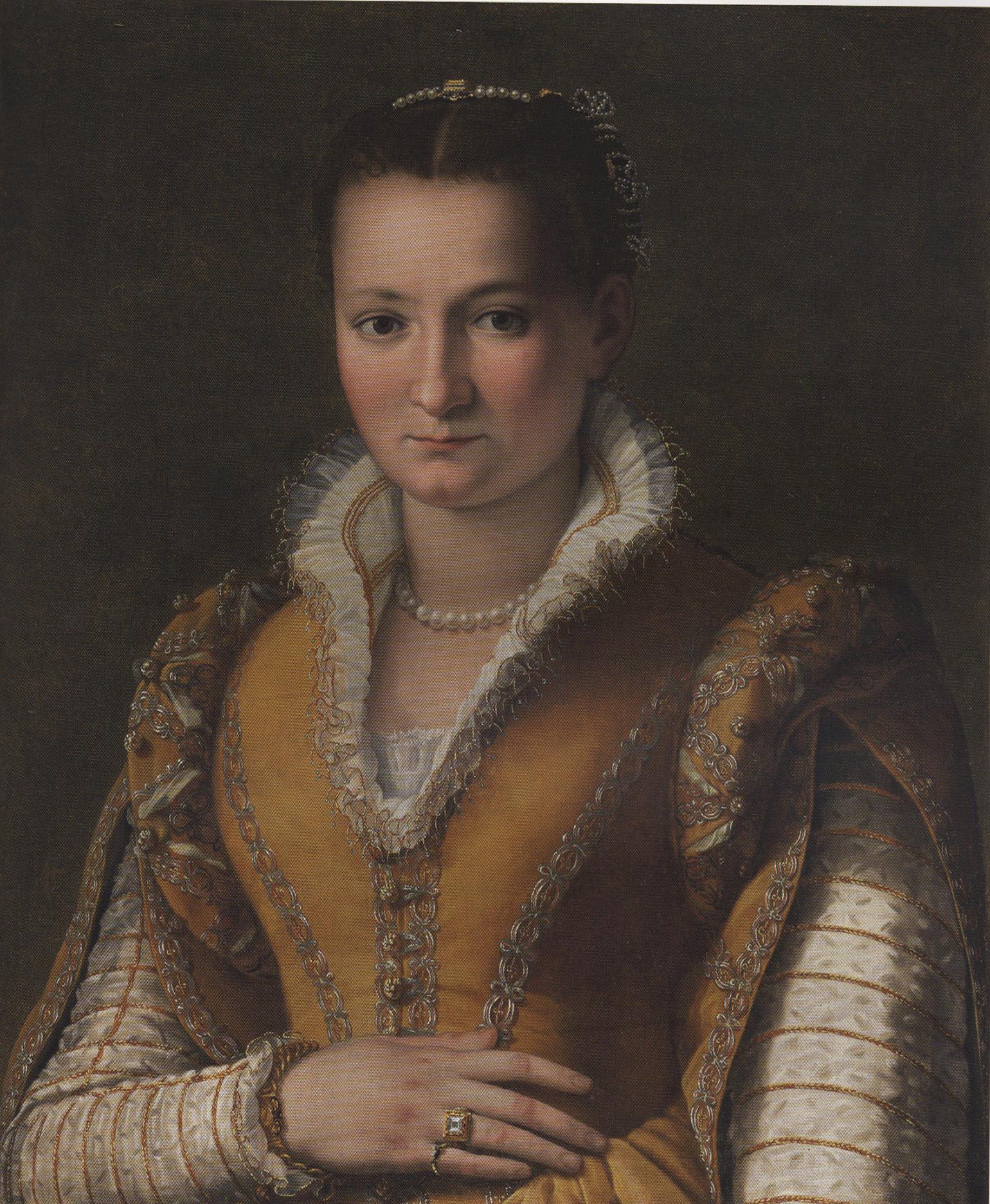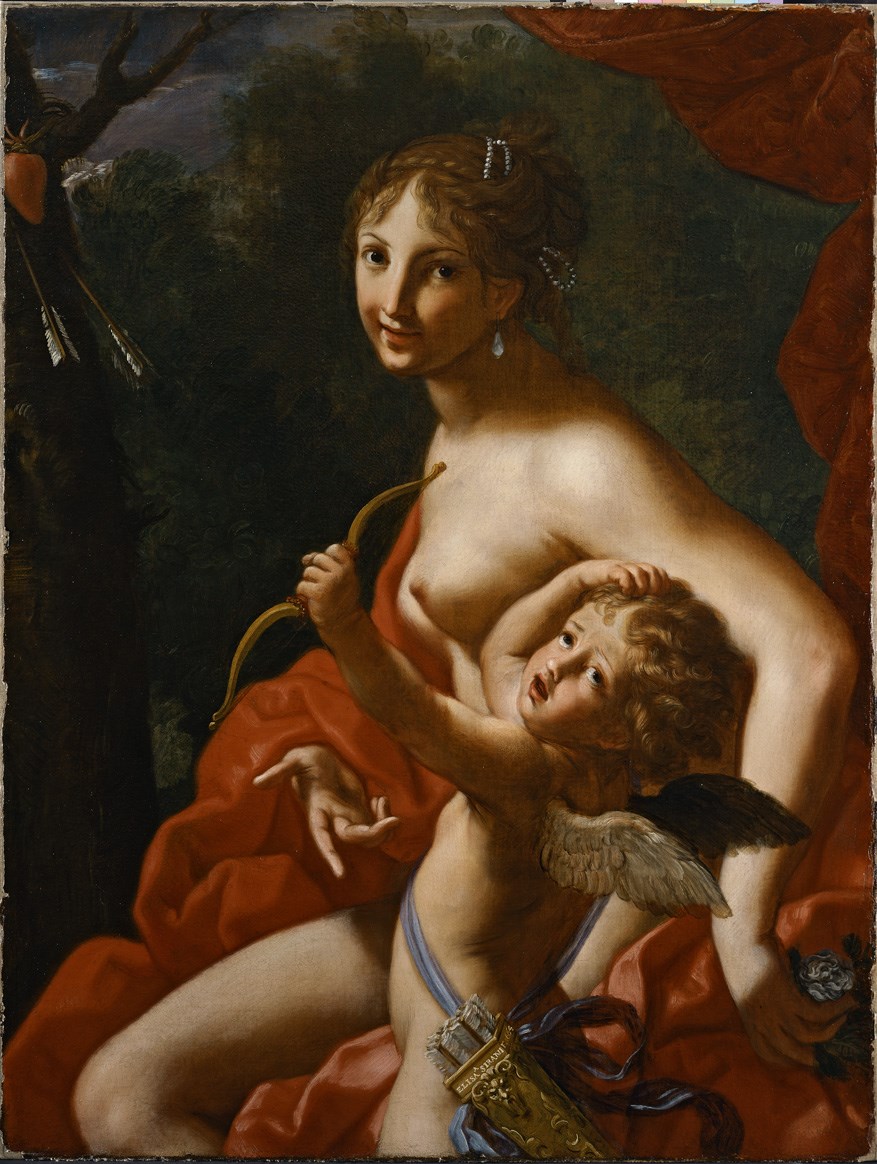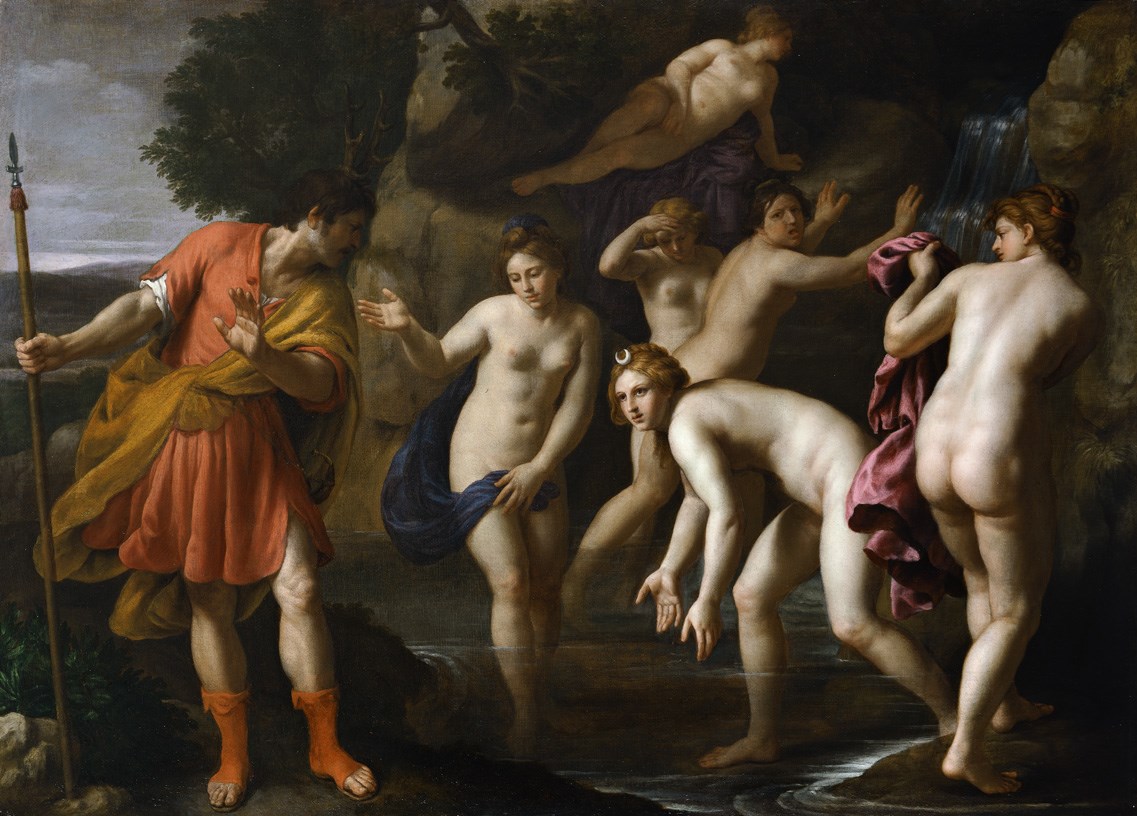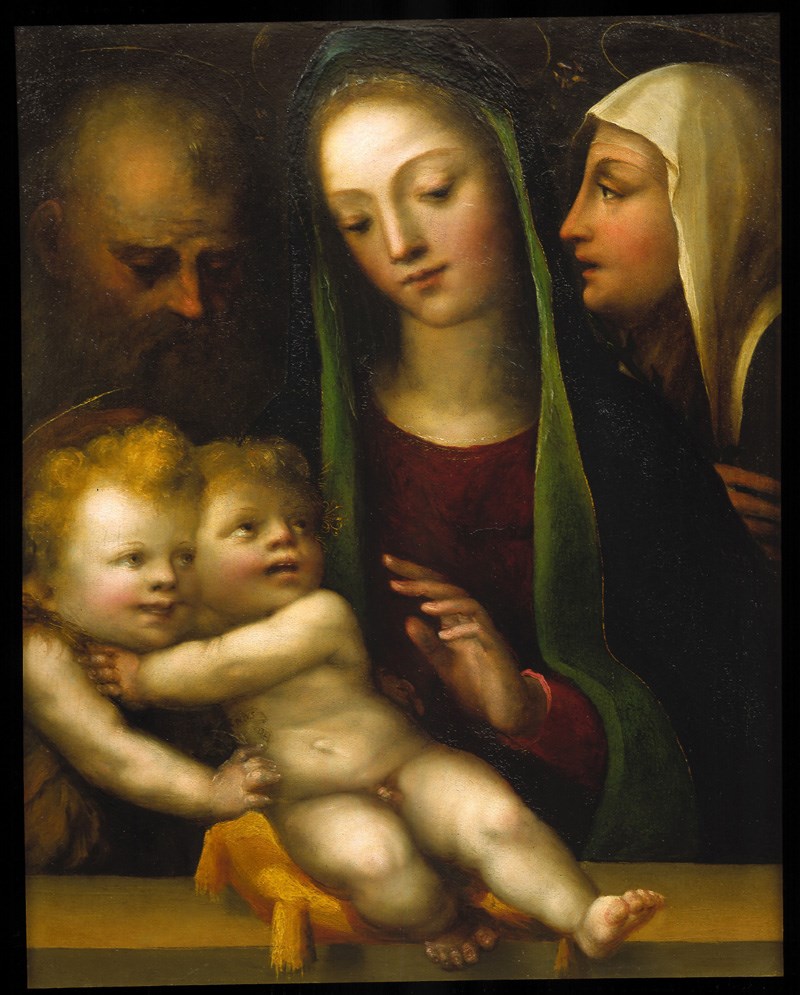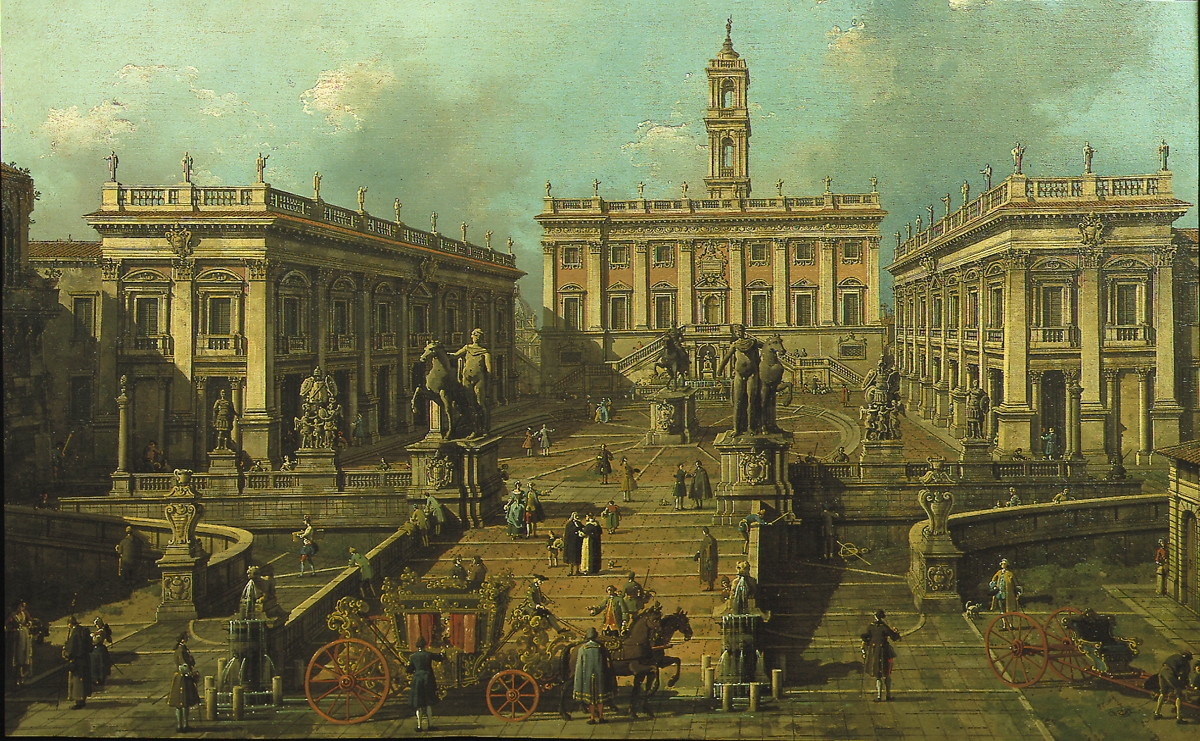Cardinal Jules Mazarin (1602-1661), by whom acquired before 1653, probably directly from the artist, and in whose collection it remained (Palais Mazarin, Paris), until after 1714;
François Tronchin (1704-1798), Maison des Délices, near Geneva, after 1765, whose wax seal appears on the reverse of the canvas;
By whom sold to Empress Catherine the Great of Russia (1729-1 ...
96) in or around 1770, in whose collection it hung in the Winter Palace, St. Petersburg;
Thence by descent to her son Tsar Pavel I (Petrovich) (1754-1801) (r. 1796-1801), whose monogram appears on a wax seal affixed to the reverse of the relining canvas, The State Imperial Museum, St. Petersburg [during Pavel’s reign the Winter Palace ceased to be private property of the Tsar and acquired the status of an Imperial museum];
Transferred to one of his estates, probably Gatgina Palace, situated 50 miles south-west of St. Petersburg [the seal on the reverse indicates that it was one of the pieces moved from The State Imperial Museum];
Thence by descent to his son Tsar Alexander I Pavlovich (1777-1825) (r. 1801-1825);
Thence by inheritance to his brother Tsar Nikolai I Pavlovich (1796-1855) (r. 1825-1855) and returned to the State Imperial Museum, St. Petersburg, some time after 1838;
His sale, St. Petersburg, 6 June 1854 (1st day), no. 85 (the lot number according to Wrangell, under Literature, and also inscribed on the stretcher);
Acquired in St. Petersburg by the grandfather of the former owners at the beginning of the 20th century, remaining in a private collection, Sweden, until recently.
Count J.E. Münnich (Munich or Minikh), Catalogue des tableaux qui se trouvent dans les galeries et dans les cabinets du palais impérial de Saint-Pétersbourg, MS. Hermitage State Museum Archives, St. Petersburg, 1774, vol. I, p. 279, no. 888 (as ‘Simon Cantarini, dit le Pesarese. Buste de Vieillard. Il est vu de profil, la tête chauve, tenant une livre ferme. Ce t ...
bleau, que les Connaisseurs ne croient pas du Pesarese, ne laisse pas d’avoir sa merite. Sur toile. Haute 15.8 Large 11. [-]’);
F.I. Labenski?, Catalogue of Hermitage’s pictures made under Pavel I’s order by academician-artists Akimov, Gordejev, Ugroumov and Kozlovsky, St. Petersburg 1797, vol. I, p.71, no. 417 (as ‘Head of an old man. Height 15 versh width 11 ½ versh [1 versh = 4.4 cm.] Tronchin 888, without a frame’);
Henri d’Orléans, Duc d’Aumale, Inventaire de tous les meubles du Cardinal Mazarin dressé en 1653 et publié d’après l’original conservé dans Les Archives de Condé, London 1861, p. 311, no. 143;
P. Lacroix, “Musée du Palais de l’Ermitage sous le règne de Catherine II”, in Revue universelle des Arts, vol. XIII, 1861, p. 257, no. 888 (transcribed from Munich, see above, ‘Simon Cantarini, dit le Pesarese. Buste de Vieillard’);
Baron N. Wrangell, “‘Ikusstvo i gosudar’ Nikolay Pavlovich [Art and the Sovereign Nickolay Pavlovich]”, in Staryye gody [Years of Old], June-September 1913, p. 95, no. 85 in the list of pictures sold at auction in 1854 (as ‘Simon de Pesaro. Head of an old man, 15 x 11 ½ versh’);
A. Sutherland Harris, Andrea Sacchi. Complete edition of the paintings with a critical catalogue, Oxford 1977, p. 105, cat. no. L8 (under ‘Lost Works’, as recorded in the collection of Cardinal Mazarin in 1653);
P. Michel, Mazarin, prince des collectionneurs: les collections et l’ameublement du Cardinal Mazarin (1602-1661): histoire et analyse, Paris 1999, p. 243 and p. 253, footnote 16, p. 381 and pp. 405-6, footnote 76, and pp. 580-81;
T. Yoshida-Takeda, C. Lebrun-Jouve & J. Delumeau, Inventaire dressé après le décès en 1661 du Cardinal Mazarin, Mémoires de l’Académie des inscriptions et belles-lettres, vol. XXX, Paris 2004, p. 182, no. 983;
T. Montanari, “Un nuovo quadro di Andrea Sacchi: il ‘Sant’Andrea’ del cardinal Mazzarino”, in Antologia di Belle Arti. Studi Romani, nos. 61-74, 2007, pp. 21-27, reproduced figs. 3, 5 (back), 6 and 7 (details of collectors’ seals).
The rediscovery of this painting by Andrea Sacchi is remarkable, not only for the fact that easel paintings by the artist are extremely rare but also because the picture remained unrecognized for over a century, despite it having once formed part of a number of illustrious collections. The painting was acquired by Cardinal Jules Mazarin, Prime Minister to the French king Louis XIV, almost cert ...
inly directly from the artist himself. It was then owned by the Swiss banker and collector François Tronchin who subsequently sold it to Catherine the Great. The picture remained in the Imperial Russian collections until the mid-19th century and it was not until recently that it was correctly identified as Sacchi’s ‘lost’ Saint Andrew, by Prof. Tomaso Montanari and Prof. Ann Sutherland Harris.
The painting was executed by the artist in his early maturity, probably around 1630, and displays a freedom of brushwork, subdued tonality and three-dimensional quality not often found in Sacchi’s work. The confident handling of paint and the picture’s sculptural qualities are reminiscent of Gian Lorenzo Bernini: the two artists certainly knew each other and are known to have worked closely in Rome during the 1620s. Sacchi’s painting of Saints Anthony Abbot and Francis in the National Gallery, London, was probably conceived as a pendant to Bernini’s Saints Andrew and Thomas (also in the National Gallery), alongside which it used to hang in Cardinal Francesco Barberini’s collection in Rome. Payments for both paintings are recorded in June 1627 and it has been proposed that Bernini may have painted his picture under the guidance of Sacchi: although this is only hypothetical one cannot deny that the two artists influenced each other greatly.
Indeed that painting, like the present work, moves away from Sacchi’s more characteristic painting style: the colors are subdued and the brownish tones more closely resemble those usually found in Bernini’s self-portraits; the figures are set against a dark background and are given their three-dimensional form through the use of chiaroscuro; and the sketchiness of the beard and hands both demonstrate the influence of Bernini. The facial type of the Saint Andrew recalls the elderly bearded male representing Saint Anthony Abbot in the ex-Barberini canvas, and both works share a similar head-and-shoulders format in which the saints are shown with their attributes. It is therefore reasonable to assume that Saint Andrew was painted shortly after the ex-Barberini canvas, but before Sacchi’s famous Vision of Saint Romuald altarpiece in the Pinacoteca Vaticana, Rome (1631). Given that the saint depicted here is Sacchi’s name-saint, Andrew, Prof. Ann Sutherland Harris has made the plausible suggestion that the artist may have painted the picture in circa 1630 and kept it in his studio until its sale to Mazarin some twenty or so years later.
The illustrious provenance of this painting can be traced back to within the artist’s own lifetime, for it probably entered the collection of Cardinal Jules Mazarin (1602-1661) some time before 1653 and was quite possibly acquired directly from the artist himself. Mazarin’s passion for collecting preceded by some years his appointment as Cardinal in 1641. He had traveled extensively throughout France and Italy as a diplomatic agent and had thus already come into contact with important art collections and their owners: he owed much of his military and political success to Giovanni Francesco Sacchetti, whom he frequented in Rome, and he also knew the Colonna, Barberini and Bentivoglio families well. Mazarin was personally acquainted with many of the artists mentioned by the biographer Gian Pietro Bellori, particularly those in the circle of the Barberini; among them Pietro da Cortona, Giovanni Francesco Romanelli, Giovanni Francesco Grimaldi, Valentin de Boulogne, Nicolas Poussin, Simon Vouet, and of course Andrea Sacchi. As well as sourcing art from Rome, Mazarin acquired paintings from Naples, Genoa, Venice, Milan and Bologna. The fateful meeting between Mazarin and Cardinal Richelieu in 1630 led to him taking on the role of the latter’s advisor and agent in Rome for much of the 1630s.
In 1639 Mazarin was appointed Richelieu’s ‘conservateur de ses collections’ and was summoned to Paris. Once back in France Mazarin preserved his diplomatic ties with Italy, employing the painter and faker Antonio della Cornia to act as his consultant for purchases made between 1640 and 1654 (the year of Cornia’s death). It was during this period that Mazarin must have acquired Sacchi’s Saint Andrew and we know that the Cardinal knew the artist personally for in a letter to his agent Elpidio Benedetti in Rome, dated 30th October 1654, Mazarin states his intention to replace Cornia with Sacchi: “…and because I have always known him to be extremely devoted to me, I would very much like you to seek his advice, and his knowledge in that which is his own art [i.e. painting]…”. And the Saint Andrew was by no means the only example of Sacchi’s work in the Cardinal’s collection. Mazarin owned and acquired a number of paintings from the artist: Adam lamenting the death of Abel, recorded as having been sent by Mazarin to Richelieu in the 1630s; The Baptism of Christ (a version of the painting in the Lateran Palace, Rome), recorded in a Mazarin inventory of 1661; The Drunkenness of Noah and Venus, both mentioned in a letter from Mazarin, dated 9th June 1646, the former listed in the 1661 inventory and possibly identifiable with the painting formerly in the Staatliche Museen, Berlin, the latter recorded in Mazarin inventories of 1653 and 1661; and The vision of Saint Romuald (a version of the altarpiece in the Pinacoteca Vaticana, Rome) also mentioned in Mazarin inventories.
In 1649 Mazarin managed to acquire the hôtel de Chevry; the building he had lived in since becoming Cardinal eight years earlier. The Palais Mazarin, as it came to be known, was located at the extreme end of the gardens in which Louis XIV played as a child (today it is the Institut de France and home to the Académie Française). The building was designed and constructed by Jean Thiriot in 1635 and subsequently enlarged by François Mansart who, at Mazarin’s request, built an extension of two superimposed galleries to house the Cardinal’s art collection. Mazarin also had an apartment inside the Palais Royal, where he seems to have kept the most valuable objects in his collection, but the present painting appears always to have hung in the Palais Mazarin. The picture is listed for the first time in the 1653 inventory of Mazarin’s collection, drawn up from 12th September of that year and transcribed in the Duc d’Aumale’s publication of 1861.
The year in which the inventory was begun was of great significance for Mazarin: it marked the end of the five-year-long civil war called the ‘Fronde’ (‘fronde’ literally meaning ‘sling’, thus alluding to the Paris mobs’ attacks against Mazarin’s supporters). The motivation behind the Fronde was to defend the rights of the parlements which were being put under increasing pressure from the Crown. Mazarin’s attempts to raise funds through taxation led to an uprising among the noble classes, discontented princes and nobles such as the Prince of Condé and his brother the Prince of Conti among them. It was a time of great political upheaval and during the Fronde Mazarin was forced to leave Paris and France on numerous occasions. When he finally returned to Paris unopposed in February 1653 he understandably ordered a list to be drawn up of all his possessions, many of which had been seized by the Crown during his absences. The Saint Andrew was among them and in the 1653 inventory appears as number 143, the same number that is still visible through the painting’s 18th-century relining canvas: ‘143. St André tenant en ses mains un livre et un poisson, envyron demye figure, avec sa bordure couleur de noix et or. Andre Uccio Sacchi’. The painting next appears in Mazarin’s posthumous inventory of 1661, drawn up by the artists Andrea Podesta (doc. 1620-1674), Pierre Mignard (1612-1695) and Charles-Alphonse Dufresnoy (1611-1667), ‘peintres ordinaires du Roy demeurans a Paris’: ‘983 – Un autre faict par André Sacqui sur toille representant un sainct André tenant un livre et un poisson, hault de deux piedz et large d’un pied six poulces, garny de sa bordure couleur de noyer a filletz d’or, prisé la somme de trois cents livres cy… III c. £’. The painting remained in the Palais Mazarin after the Cardinal’s death and is recorded as still hanging there in the chambre Sabines in 1670, and in the grande salle d’entrée in 1714.
The next recorded owner of the Saint Andrew is the Swiss banker and amateur François Tronchin (1704-1798) and though it is unknown when or where he acquired the painting, his coat-of-arms appear on one of the wax seals affixed to the reverse of the canvas. Tronchin was born in Geneva and probably began collecting paintings around 1740, well into his thirties. He acquired most of his art in Paris, Amsterdam, The Hague and London, where his banking business took him on frequent travels. Indeed much of Tronchin’s art collection consisted of fine Dutch and Flemish Old Masters, one of the most famous being Rembrandt’s Woman in a bed (National Gallery of Scotland, Edinburgh), which he is shown admiring in Jean-Etienne Liotard’s celebrated pastel portrait of 1757.
In 1722 Tronchin moved to Paris to join the family bank Tronchin & Cie and it is likely that he acquired Sacchi’s painting there. Upon liquidation of the company in 1740 and much criticized by his business associate Isaac Thellusson, who accused him of having pursued his artistic rather than business interests, Tronchin returned to live in Geneva, where he later became a local political figure and authority on collecting in the arts. His return to Switzerland allowed him to concentrate on building up his art collection and in 1765 he moved himself and his entire collection into ‘Les Délices’; a property situated outside Geneva which his brother, the banker Jean-Robert Tronchin, had acquired for the French philosopher and writer Voltaire ten years earlier. Also in 1765 Tronchin published a catalogue of his collection: the fact that the Saint Andrew is not listed there might suggest that Tronchin purchased it after that date, but it is just as likely that it was merely omitted.
That Tronchin owned the Saint Andrew is proven not only by the presence of his wax seal on the reverse but also by the painting’s next recorded owner: Catherine the Great, Empress of Russia (1729-1796). In 1770 or shortly afterwards Tronchin sold his entire collection – ninety-five paintings in all – to Catherine the Great; a transaction negotiated through Diderot and Prince Galitzin, but finally concluded through General Betzky. Catherine wrote a letter to Voltaire about the collection on 31st March 1770, suggesting that negotiations were well underway. Tronchin paid 290 rubles and 56 kopecks for shipping a cabinet from his collection to St. Petersburg on 17th July 1770, thereby suggesting that the collection was already making its way there, and indeed by 23rd October 1771 the paintings had already arrived in St. Petersburg. An inventory of ninety-five paintings was drawn up at the time of the deal but the Saint Andrew is not listed there. It first appears instead in Count Johann Ernst Münnich’s French-language catalogue of Catherine’s collection, compiled for her in 1774, with an erroneous attribution to Simone Cantarini. The painting may have ‘lost’ its attribution to Andrea Sacchi whilst changing hands, particularly if it was not inventoried like the rest of Tronchin’s collection, and the error persisted throughout its recorded presence in the Imperial collections for the remainder of the 18th century, right up until the painting’s appearance at auction in 1854. Shortly after the sale of his first collection to Catherine the Great, Tronchin began collecting again and in 1780 he published a catalogue of his second collection (which was eventually sold posthumously in Paris on 23rd March 1801). Tronchin’s collaboration with Catherine the Great also persisted beyond 1770: he continued to sell paintings to her directly and in 1772 he was responsible for securing the purchase of Crozat de Thiers’ collection, which consisted of 500 paintings, amongst them masterpieces such as Rembrandt’s Danaë (today still in the Hermitage).
The Saint Andrew passed by inheritance to Catherine’s son Pavel I, whose monogram appears on a wax seal affixed to the reverse of the relining canvas. It continued to hang at the Winter Palace but during Pavel’s reign the building ceased to be private property of the Tsar and acquired the status of an Imperial Museum. Indeed the presence of the seal indicates that this was one of the paintings moved from the State Imperial Museum and transferred to one of his estates, probably Gatgina Palace, situated 50 miles south-west of St Petersburg. The Saint Andrew was listed in the catalogue of the Hermitage’s pictures, compiled under Pavel’s orders, where it was described by its subject but not given an attribution (presumably because the Russian artists brought in to draw up the list did not recognize the artist’s hand). The number 417, brushed in red paint onto the relining canvas, corresponds with the numbering in this catalogue of 1797 and must surely date from that time. The painting then passed to Pavel’s son Alexander and subsequently to the latter’s brother Nikolai, who returned the picture to the State Imperial Museum some time after 1838. Nikolai was responsible for the ambitious project of building a new museum which would give public access to the Hermitage collections. The building work was based on designs by the architect Leo van Kleuze and lasted nine years (from 1842 to 1851), at the end of which the ‘New Hermitage’ was opened in February 1852.
As a result of this project a total reassessment of the Picture Gallery and the paintings in the Imperial collection was ordered by Nikolai in the summer of the following year. A commission of three artists was set up to review all the paintings and divide them into four categories: those worthy of display in the new galleries (815), those to be hung elsewhere as decoration (804), those to be kept in store (1,369) and those considered of insufficient importance (1,564). The last of these were removed to the Tauride Palace and, having removed some paintings to donate as gifts, most of what remained were sent to auction (1,219 in all) and were sold in 1854. Nikolai was personally involved in the project, appearing daily during the selection process, and although his passion for art led to a dramatic re-hang of the Hermitage collections, it is largely due to his zeal that so much of the collection was dispersed. This was the fate of the Saint Andrew: having ‘lost’ its attribution to Sacchi (and that to Cantarini in 1797 already), it was removed from the collection and sold in 1854.






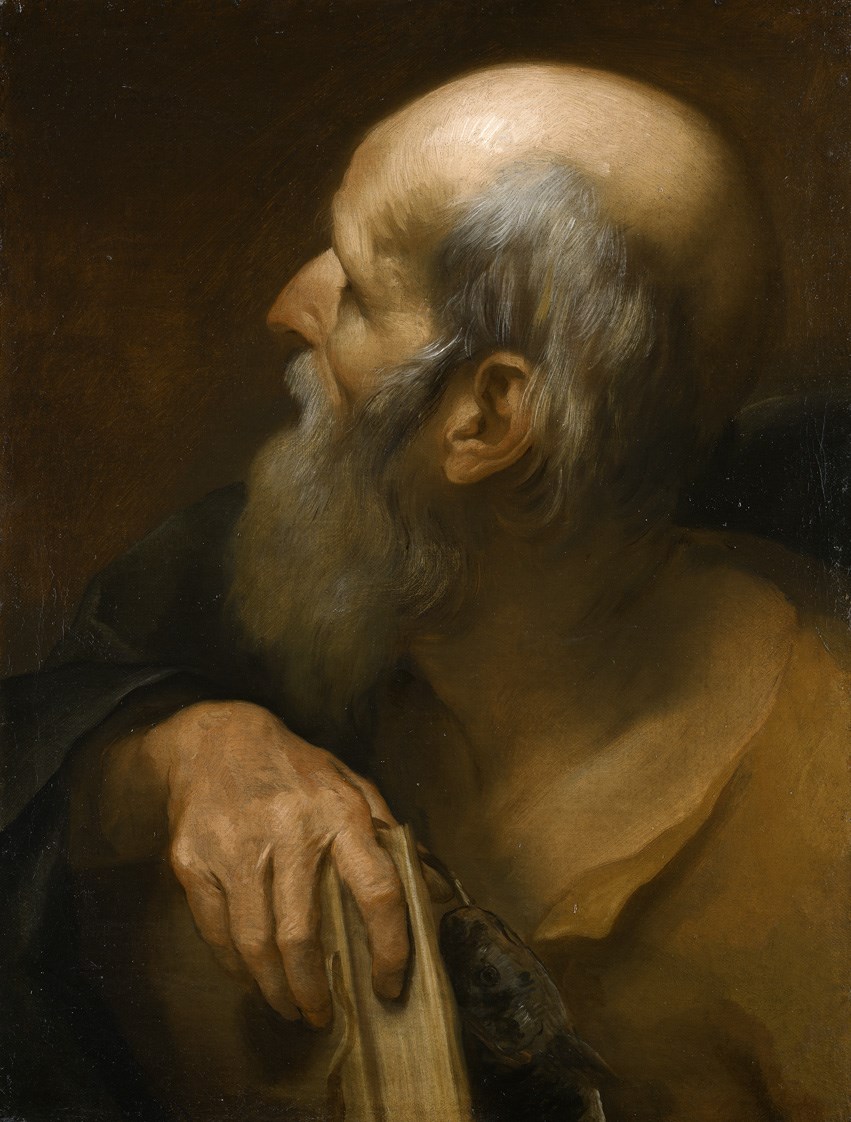
 Facebook
Facebook
 Twitter
Twitter


 Gmail
Gmail
